Male partner testing and sexual behaviour following provision of multiple HIV self-tests to Kenyan women at higher risk of HIV infection in a cluster randomized trial
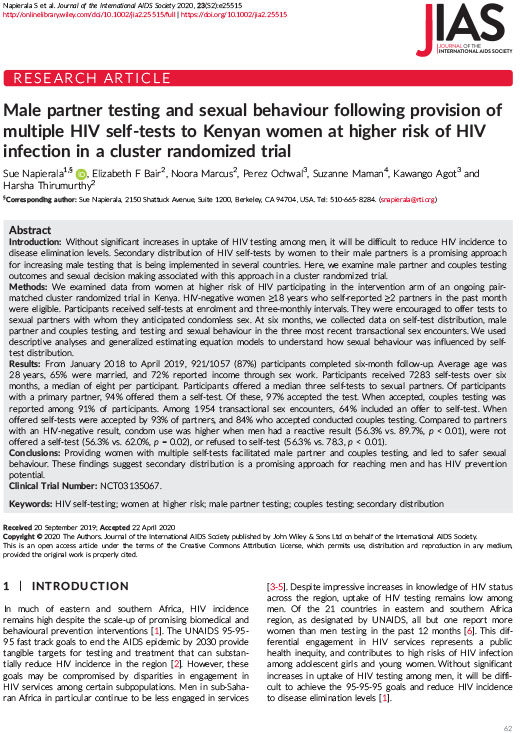
Introduction Without significant increases in uptake of HIV testing among men, it will be difficult to reduce HIV incidence to disease elimination levels. Secondary distribution of HIV self-tests by women to their male partners is a promising approach for increasing male testing that is being implemented in several countries. Here, we examine male partner and […]
Index and targeted community-based testing to optimize HIV case finding and ART linkage among men in Zambia
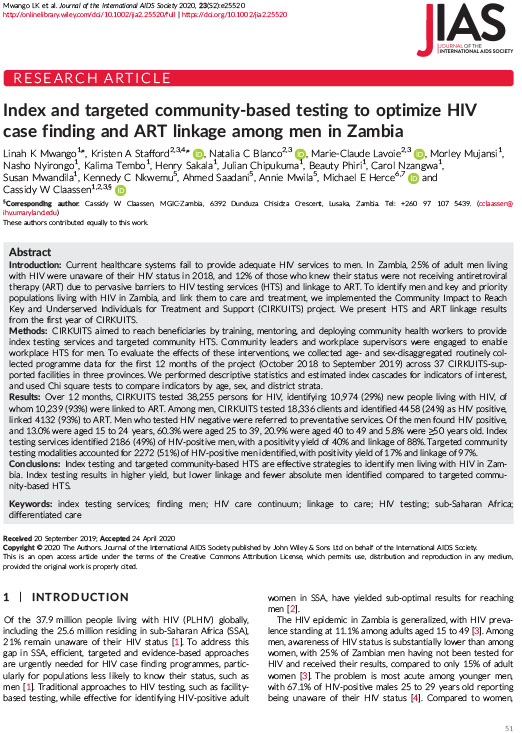
Introduction Current healthcare systems fail to provide adequate HIV services to men. In Zambia, 25% of adult men living with HIV were unaware of their HIV status in 2018, and 12% of those who were unaware of their HIV statu were not receiving antiretroviral therapy (ART) due to pervasive barriers to HIV testing services (HTS) […]
Shifting the narrative: from “the missing men” to “we are missing the men”
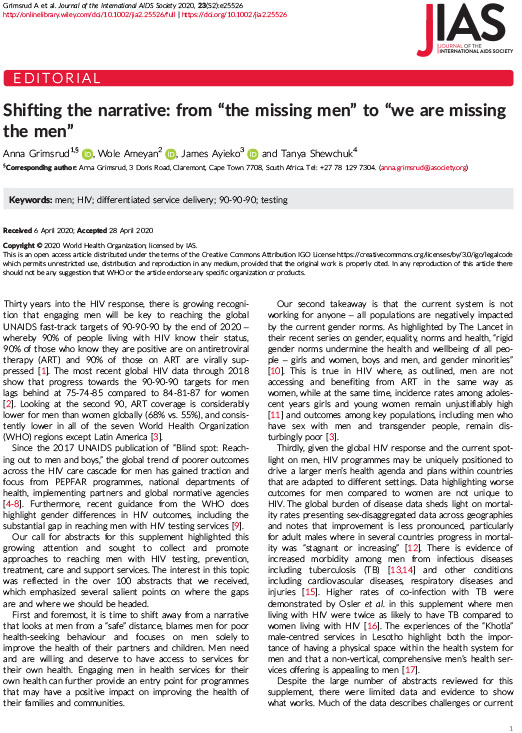
Thirty years into the HIV response, there is growing recognition that engaging men will be key to reaching the global UNAIDS fast‐track targets of 90‐90‐90 by the end of 2020 – whereby 90% of people living with HIV know their status, 90% of those who know they are positive are on antiretroviral therapy (ART) and […]
Gendered health institutions: examining the organization of health services and men’s use of HIV testing in Malawi
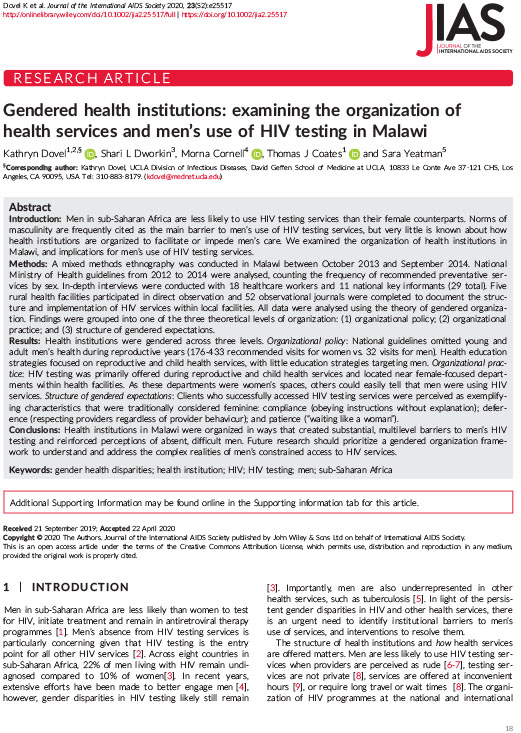
Introduction Men in sub-Saharan Africa are less likely to use HIV testing services than their female counterparts. Norms of masculinity are frequently cited as the main barrier to men’s use of HIV testing services, but very little is known about how health institutions are organized to facilitate or impede men’s care. We examined the organization […]
HIV prevalence, testing and treatment among men who have sex with men through engagement in virtual sexual networks in Kenya: a cross-sectional bio-behavioural study
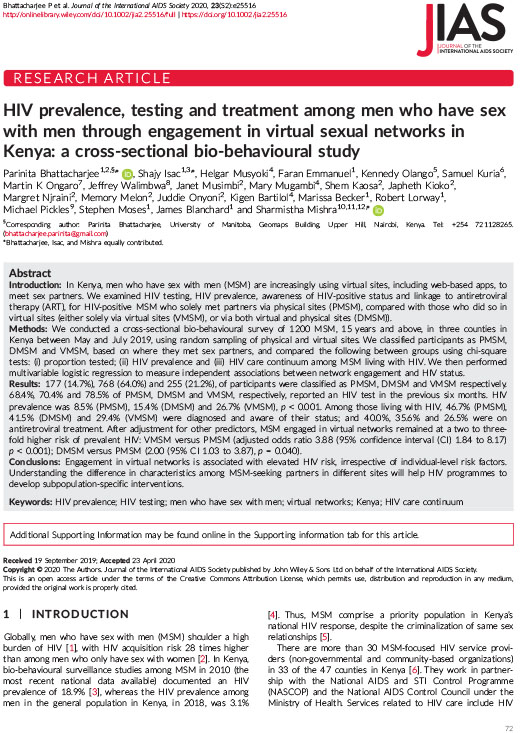
Introduction In Kenya, men who have sex with men (MSM) are increasingly using virtual sites, including web-based apps, to meet sex partners. We examined HIV testing, HIV prevalence, awareness of HIV-positive status and linkage to antiretroviral therapy (ART), for HIV-positive MSM who solely met partners via physical sites (PMSM), compared with those who did so […]
Briefing on men’s health for WHO gender, equity and human rights unit
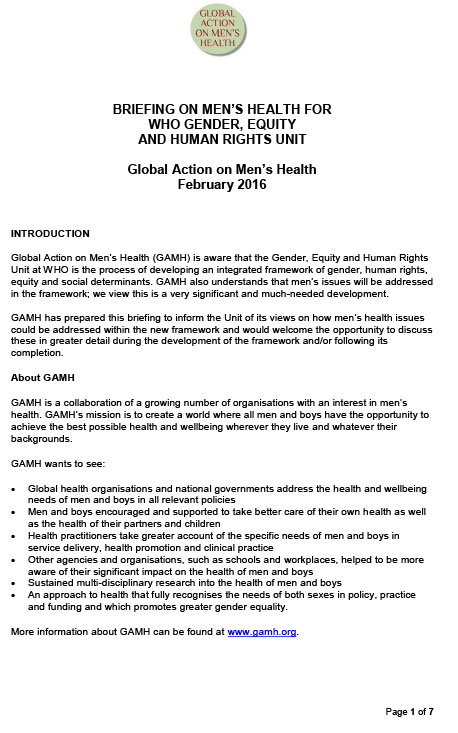
Global Action on Men’s Health (GAMH) is aware that the Gender, Equity and Human Rights Unit at WHO is the process of developing an integrated framework of gender, human rights, equity and social determinants. GAMH also understands that men’s issues will be addressed in the framework; we view this is a very significant and much-needed […]
Who Needs to Be Targeted for HIV Testing and Treatment in KwaZulu-Natal? Results From a Population-Based Survey

Introduction: Identifying gaps in HIV testing and treatment is essential to design specific strategies targeting those not accessing HIV services. We assessed the prevalence and factors associated with being HIV untested, unaware, untreated, and virally unsuppressed in KwaZulu-Natal, South Africa. Methods: Cross-sectional population-based survey. People aged 15–59 years were eligible. Interviews, HIV testing, and blood […]
Systematic review of strategies to increase men’s HIV-testing in sub-Saharan Africa
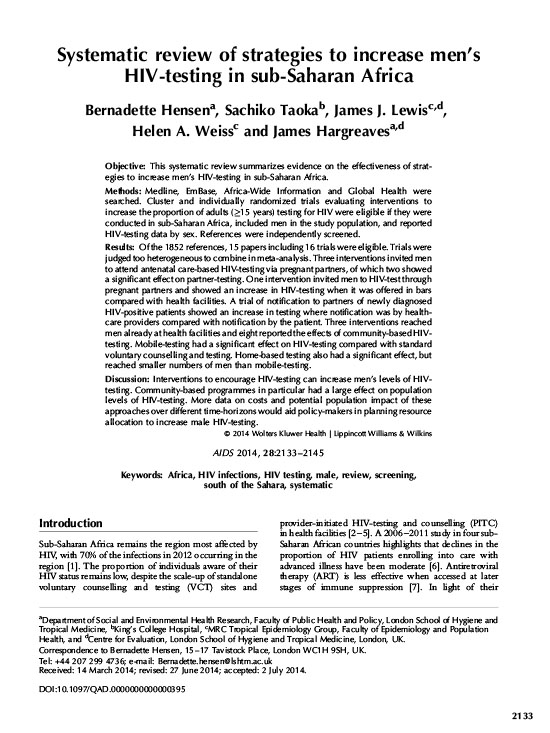
Objective: This systematic review summarizes evidence on the effectiveness of strategies to increase men’s HIV-testing in sub-Saharan Africa. Methods: Medline, EmBase, Africa-Wide Information and Global Health were searched. Cluster and individually randomized trials evaluating interventions to increase the proportion of adults (≥15 years) testing for HIV were eligible if they were conducted in sub-Saharan Africa, […]
Sex in Geneva, sex in Lilongwe, and sex in Balaka
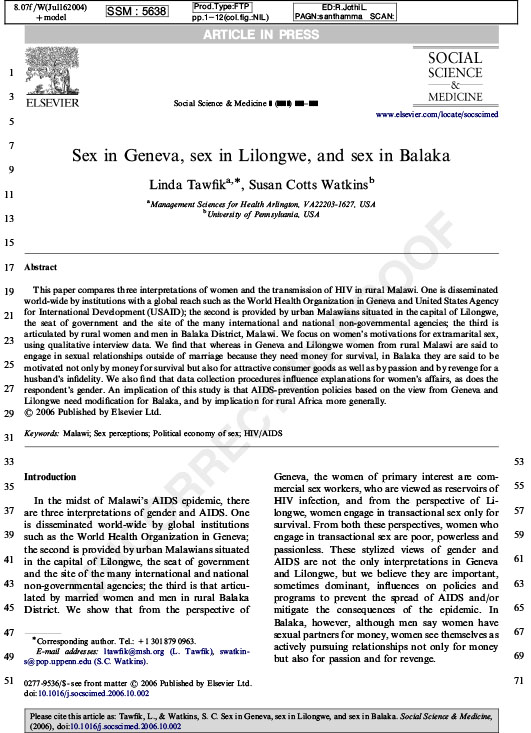
This paper compares three interpretations of women and the transmission of HIV in rural Malawi. One is disseminated world-wide by institutions with a global reach such as the World Health Organization in Geneva and United States Agency for International Development (USAID); the second is provided by urban Malawians situated in the capital of Lilongwe, the […]
An Incentivized HIV Counseling and Testing Program Targeting Hard-to-Reach Unemployed Men in Cape Town, South Africa
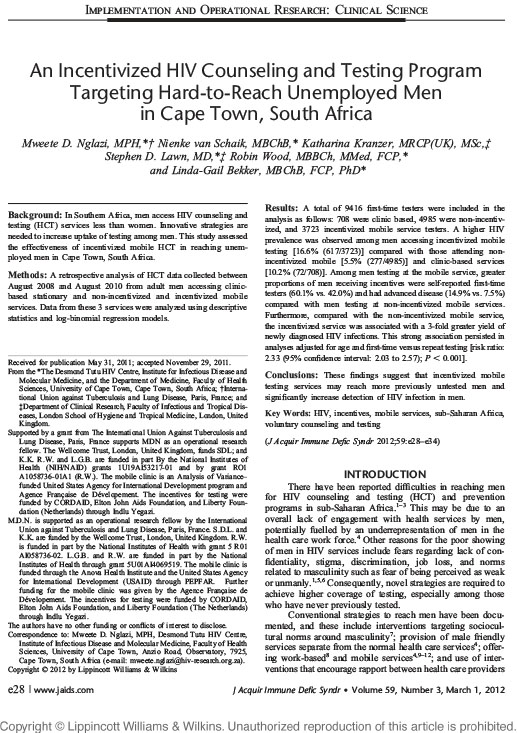
Background In Southern Africa, men access HIV counseling and testing (HCT) services less than women. Innovative strategies are needed to increase uptake of testing among men. This study assessed the effectiveness of incentivized mobile HCT in reaching unemployed men in Cape Town, South Africa. Methods A retrospective analysis of HCT data collected between August 2008 […]


